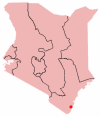 The boll weevil is a beetle that feeds on bolls, the seed-bearing capsules of cotton plants. Probably of Mexican or Central American origin, the boll weevil appeared in Texas about 1892, spread to most cotton-growing regions of the US, and eventually became responsible for the destruction of about 8% of the nation’s annual cotton crop. Eradication programs begun in 1978 have proven successful in many states. Why did the citizens of Enterprise, Alabama, erect a monument to the pest in 1919? Discuss
The boll weevil is a beetle that feeds on bolls, the seed-bearing capsules of cotton plants. Probably of Mexican or Central American origin, the boll weevil appeared in Texas about 1892, spread to most cotton-growing regions of the US, and eventually became responsible for the destruction of about 8% of the nation’s annual cotton crop. Eradication programs begun in 1978 have proven successful in many states. Why did the citizens of Enterprise, Alabama, erect a monument to the pest in 1919? Discuss
Source: The Free Dictionary
 Diamond Head—Le’ahi in Hawaiian—is a peak along the rim of an extinct volcano in southeast Oahu. Its English name was given by 19th-century British sailors who mistook calcite crystals embedded in the rock for diamonds. A prominent point in the Honolulu skyline, Diamond Head was designated a national natural landmark to protect its slopes from the commercial development along world-famous Waikiki Beach. Why do scientists think that Diamond Head was formed by a short-lived eruption?
Diamond Head—Le’ahi in Hawaiian—is a peak along the rim of an extinct volcano in southeast Oahu. Its English name was given by 19th-century British sailors who mistook calcite crystals embedded in the rock for diamonds. A prominent point in the Honolulu skyline, Diamond Head was designated a national natural landmark to protect its slopes from the commercial development along world-famous Waikiki Beach. Why do scientists think that Diamond Head was formed by a short-lived eruption?  The San are an indigenous people of Africa, mainly found in Botswana, Namibia, Angola, and South Africa. Once nomadic hunters and gatherers of wild food in desolate areas like the Kalahari Desert of southwest Africa, most of the San now live in settlements and work on cattle ranches or farms. The San have a rich folklore, are skilled in drawing, and have a remarkably complex language characterized by the use of clicks. What plant used by the San has been patented, and why?
The San are an indigenous people of Africa, mainly found in Botswana, Namibia, Angola, and South Africa. Once nomadic hunters and gatherers of wild food in desolate areas like the Kalahari Desert of southwest Africa, most of the San now live in settlements and work on cattle ranches or farms. The San have a rich folklore, are skilled in drawing, and have a remarkably complex language characterized by the use of clicks. What plant used by the San has been patented, and why?  Mombasa is the second largest city in Kenya, with a population of 900,000. Until the 16th century, Mombasa was a center of the Arab trade in ivory and slaves. The city was visited by Vasco da Gama on his first voyage to India, and it was burned three times by the Portuguese. Today, Mombasa serves as a chief port for Kenya, Uganda, and northeast Tanzania, and its beaches and resorts attract thousands of tourists annually. What tragic series of events happened here on November 28, 2002?
Mombasa is the second largest city in Kenya, with a population of 900,000. Until the 16th century, Mombasa was a center of the Arab trade in ivory and slaves. The city was visited by Vasco da Gama on his first voyage to India, and it was burned three times by the Portuguese. Today, Mombasa serves as a chief port for Kenya, Uganda, and northeast Tanzania, and its beaches and resorts attract thousands of tourists annually. What tragic series of events happened here on November 28, 2002?  The Aleppo Codex is one of the oldest manuscripts of the Masoretic Hebrew Bible. The scribe Shlomo ben Buya’a copied the text of the Codex circa 920 CE. It was delivered to the Karaite community of Jerusalem in the 11th century but was looted and taken to Cairo, Egypt. There, it was consulted by Maimonides, the most influential Jewish thinker of the Middle Ages. Later, it was taken to Aleppo, Syria, where the community guarded it zealously for 600 years. What happened to the Codex in 1947?
The Aleppo Codex is one of the oldest manuscripts of the Masoretic Hebrew Bible. The scribe Shlomo ben Buya’a copied the text of the Codex circa 920 CE. It was delivered to the Karaite community of Jerusalem in the 11th century but was looted and taken to Cairo, Egypt. There, it was consulted by Maimonides, the most influential Jewish thinker of the Middle Ages. Later, it was taken to Aleppo, Syria, where the community guarded it zealously for 600 years. What happened to the Codex in 1947?  The Great Mississippi Flood of 1927 was the most destructive river flood in US history. Following heavy rains in 1926, the Mississippi River broke out of its levee system in 145 places, causing over $400 million in damages and killing 246 people in seven states. After the disaster, the federal government took over flood-control work—stabilizing river banks, improving channels, and constructing levees, floodwalls, floodways, and reservoirs. What famous song was written about the flood?
The Great Mississippi Flood of 1927 was the most destructive river flood in US history. Following heavy rains in 1926, the Mississippi River broke out of its levee system in 145 places, causing over $400 million in damages and killing 246 people in seven states. After the disaster, the federal government took over flood-control work—stabilizing river banks, improving channels, and constructing levees, floodwalls, floodways, and reservoirs. What famous song was written about the flood?  Located on the Persian Gulf, Abu Dhabi is the largest of the seven emirates that make up the United Arab Emirates (UAE). Its capital, also named Abu Dhabi, is the second largest city in the UAE and became the provisional capital when the UAE was formed in 1971. Oil was discovered there in the late 1960s, and the abundant oil revenues have since been used for the country’s development and modernization. What was one of Abu Dhabi’s major industries before it was eclipsed by oil?
Located on the Persian Gulf, Abu Dhabi is the largest of the seven emirates that make up the United Arab Emirates (UAE). Its capital, also named Abu Dhabi, is the second largest city in the UAE and became the provisional capital when the UAE was formed in 1971. Oil was discovered there in the late 1960s, and the abundant oil revenues have since been used for the country’s development and modernization. What was one of Abu Dhabi’s major industries before it was eclipsed by oil?  West Nile virus is mainly found in Africa, the Middle East, and Asia, and typically infects birds. Mosquitoes that have fed on infected birds can then transmit the disease to humans. About one-fifth of humans infected with the virus develop West Nile fever, which is sometimes accompanied by a rash. Less than one percent of all persons infected develop serious illnesses like encephalitis and meningitis. West Nile virus was first identified in Uganda in 1937. When did it reach the US?
West Nile virus is mainly found in Africa, the Middle East, and Asia, and typically infects birds. Mosquitoes that have fed on infected birds can then transmit the disease to humans. About one-fifth of humans infected with the virus develop West Nile fever, which is sometimes accompanied by a rash. Less than one percent of all persons infected develop serious illnesses like encephalitis and meningitis. West Nile virus was first identified in Uganda in 1937. When did it reach the US?  Phrenology is the study of the shape of the human skull in order to draw conclusions about particular character traits and mental faculties. Phrenologists believe that traits like intelligence are mirrored through elevations in the skull overlying particular areas of the brain. German physiologist Franz Joseph Gall developed the theory around 1800, but modern neurology and physical anthropology regard phrenology as a form of quackery. What is the difference between phrenology and craniometry?
Phrenology is the study of the shape of the human skull in order to draw conclusions about particular character traits and mental faculties. Phrenologists believe that traits like intelligence are mirrored through elevations in the skull overlying particular areas of the brain. German physiologist Franz Joseph Gall developed the theory around 1800, but modern neurology and physical anthropology regard phrenology as a form of quackery. What is the difference between phrenology and craniometry?  Lagasse is a celebrity chef and restaurateur. He gained fame when his restaurant, “Emeril’s,” in New Orleans, Louisiana, was named Esquire magazine’s “Restaurant of the Year” in 1990. He went on to become the host of the popular TV shows The Essence of Emeril and Emeril Live. Lagasse delivered his cajun-and-creole-based recipes with catchphrases like “BAM!” and “Kick it up a notch!” He has also starred in his own sitcom and voiced a character in what Disney film?
Lagasse is a celebrity chef and restaurateur. He gained fame when his restaurant, “Emeril’s,” in New Orleans, Louisiana, was named Esquire magazine’s “Restaurant of the Year” in 1990. He went on to become the host of the popular TV shows The Essence of Emeril and Emeril Live. Lagasse delivered his cajun-and-creole-based recipes with catchphrases like “BAM!” and “Kick it up a notch!” He has also starred in his own sitcom and voiced a character in what Disney film?